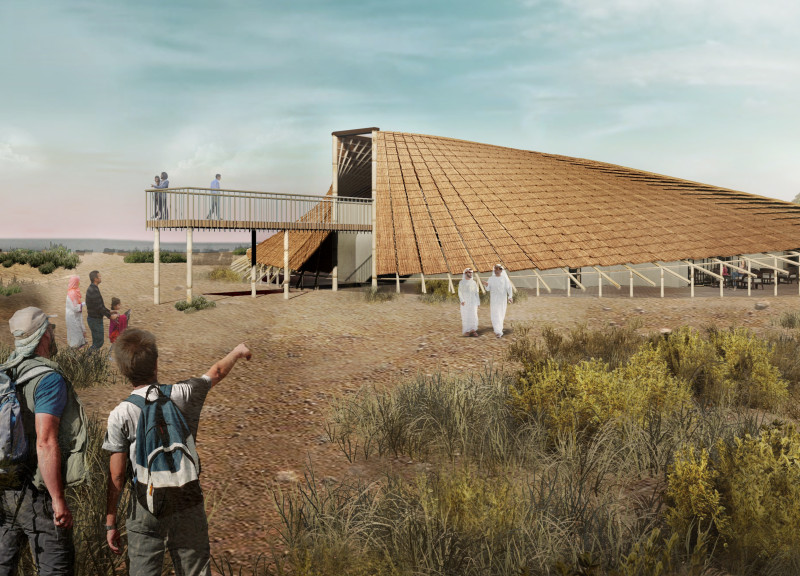5 key facts about this project
At the heart of the project lies a well-defined purpose, which blends residential, commercial, or public functions. The layout is intuitively organized, promoting accessibility and ease of navigation throughout the building. The architect has skillfully designed the flow of spaces to foster interactions, allowing for both public gatherings and intimate experiences. The integration of outdoor areas, such as landscaped gardens or terraces, enhances the overall functionality, extending living or working spaces beyond the confines of traditional walls.
Materiality plays a crucial role in this architectural endeavor, with an emphasis on locally-sourced and sustainable materials. A combination of concrete, glass, wood, and steel is utilized throughout the design, each carefully selected for its durability, aesthetic qualities, and environmental impact. The concrete provides a robust structural foundation, while expansive glass facades allow for an abundance of natural light, creating a sense of openness and connection to the outdoors. The use of wood accents adds warmth and texture, often featured in elements such as cladding, flooring, or structural beams. Steel components are integrated strategically to support larger spans and create dynamic spatial experiences.
Unique design approaches distinguish this project from others in its category. The architect has employed innovative techniques for passive heating and cooling, optimizing energy efficiency and reducing the carbon footprint. Features such as overhangs and shading devices have been carefully positioned to mitigate solar gain while maximizing daylighting. Additionally, the layout often reflects a deep contextual understanding of local climate patterns and site conditions, resulting in a building that not only responds to its environment but also enhances it.
The project is characterized by its attention to detail, from the choice of fixtures and finishes to the overall aesthetic coherence of the spaces. Every aspect is thoughtfully considered, aiming to create a cohesive architectural identity that resonates with its users. The implementation of open-plan areas encourages flexible use, allowing spaces to adapt to various activities as needed. Moreover, the incorporation of biophilic design principles—such as natural materials and views of greenery—promotes well-being and enhances the user experience.
Throughout the design process, collaboration among various stakeholders has further refined the outcomes, enabling the integration of diverse perspectives that contribute to the project’s success. This emphasis on community engagement not only enriches the architectural narrative but also ensures that the space serves the needs of its users effectively.
In contemplating this architectural design project, it becomes evident that it stands as a testament to the thoughtful interplay of geometry, function, and environment. The architect's approach embodies a clear vision, fostered by a commitment to sustainable design practices and sensitivity to context. For those keen on delving deeper into this project, exploring the architectural plans, architectural sections, architectural designs, and architectural ideas behind the work will provide a richer understanding of its innovative solutions and design strategies. Visiting the project presentation could reveal how the physical spaces align with the envisioned architectural principles, inviting a broader appreciation of the work.


























